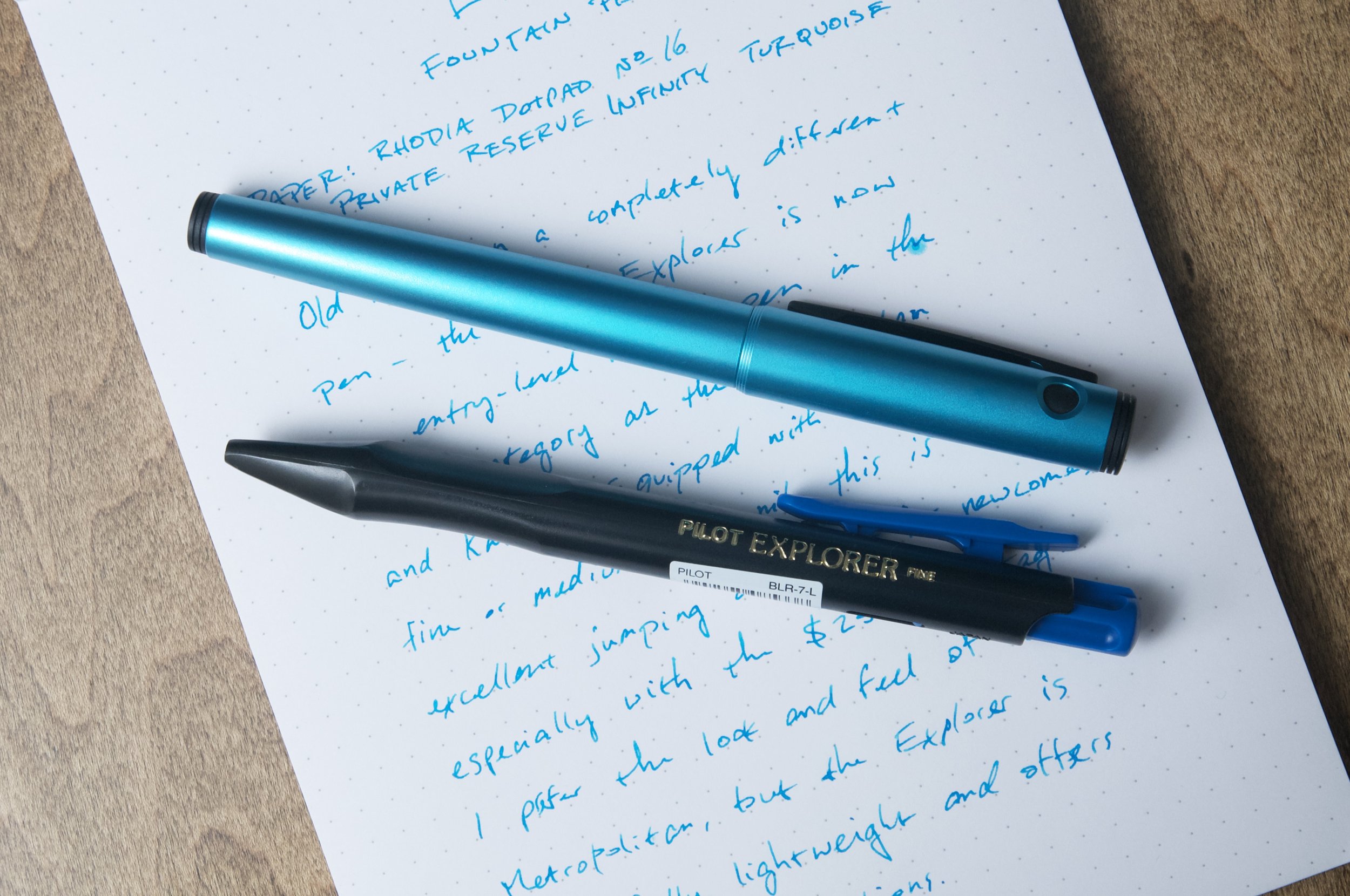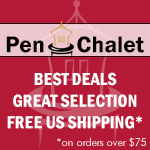(Sarah Read is an author, editor, yarn artist, and pen/paper/ink addict. You can find more about her at her website and on Twitter. And her latest book, Root Rot, is now available for pre-order!)
Writing is inherently magical, turning abstract thought into a concrete object that someone else can read, absorbing that thought, sharing it. Whole lives and worlds conjured out of imagination. Magic! Then Wyitt comes along and is like, MORE MAGIC.
I was envious of everyone who got to play with the T. Wyitt Carlile Wand Pens at the Orlando Pen Show, and elated when Brad said he was sending one my way. Granted, I was a bit let down to discover that this is not, in fact, an enchanted pen that will complete my projects for me while I nap, but it is otherwise delightful.
The body of the pen is made from beautifully turned dark wood that woodsy people will probably be able to identify in the comments (my best guess is ebony.) The wood is smooth and polished with very neat shaping that is comfortable to hold. Both the handle/cap and the pen body/wand have a purple-rose-orange-gold resin insert that shimmers with real (I assume) magic. Or sparkle, same difference. The cap band, grip section, and hardware are a rose gold color with some decorative engraving.
The nib is a fine #5 steel nib. The nib and hardware come from the fairly common kit suppliers used by pen turners, and past experiences have led me to expect a mediocre performance from these nibs, but I was very pleasantly surprised by the smoothness and excellent flow in this one. It's a true fine, with just the right amount of feedback, does not feel too dry, and has never skipped. I don't know if Wyitt tunes or adjusts the kit nibs at all, but this is definitely the best behaved kit nib I've used to date. A very nice writing experience.
While the nib is lovely, the overall writing experience is a wee bit awkward just due to the hugeness of the wand pen. Practicality isn't the objective here--whimsy and style are the driving forces of this design. It's a statement piece, perfect for when you need to sign something with flair or turn someone into a newt. Or both at once.
The handle is the cap, so if you're holding it in proper spellcasting position, it's nib-down, and a wee bit of ink leaking can be expected, or a lot bit, if you're particularly enthusiastic. As a decorative and functional desk accessory, it works perfectly.
I love how fun these are. The fact that it also writes well is icing on the cake. I think this would be perfect for a book signing, or as an art piece for the magically inclined. It would be great for D&D players, LARPers, or anyone who conjures story from the air.
Wyitt sells his pens, wands, and wand pens on his website. The wand pens run from $130-$150, which is very fair, considering the craftmanship. They're all unique and gorgeous and I hope I'll get to see more of them in person someday.
(Brad purchased this pen from T. Wyitt Carlile at normal retail price at the 2023 Orlando Pen Show.)
Enjoy reading The Pen Addict? Then consider becoming a member to receive additional weekly content, giveaways, and discounts in The Pen Addict shop. Plus, you support me and the site directly, for which I am very grateful.
Membership starts at just $5/month, with a discounted annual option available. To find out more about membership click here and join us!

























